July 11, 2019
Hot & Dry Doesn’t Mean Blah Gardens
Temperatures are soaring and the rain cloud spigot is on hold except for spotty showers this week. Undaunted native Turk’s caps, including ‘Pam’s Pink’, continue courting fleeting hummingbirds in my East Austin garden.
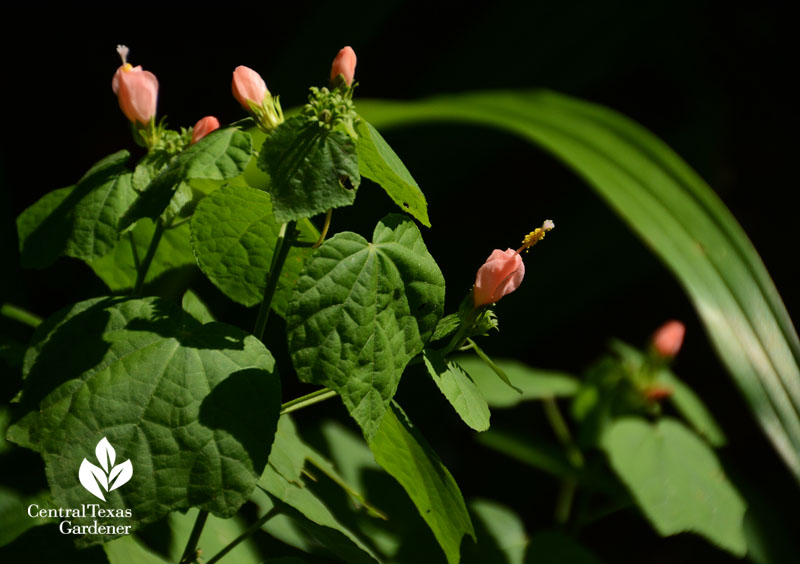
Colorado was a bit cooler when I visited in June for the Garden Bloggers Fling, but water conservation rules. I met familiar Texas plants along with “waterwise” avenue designs that cross state lines on the habitat highway, like this one at Denver Botanic Gardens’ Chatfield Farms.
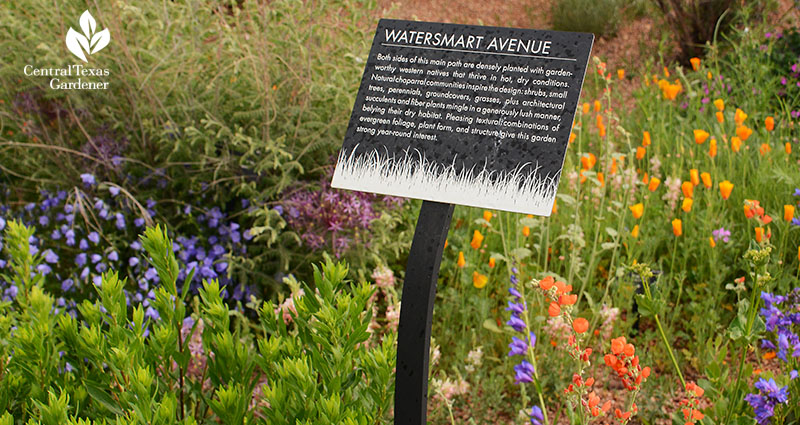
Excellent design concepts for borders.
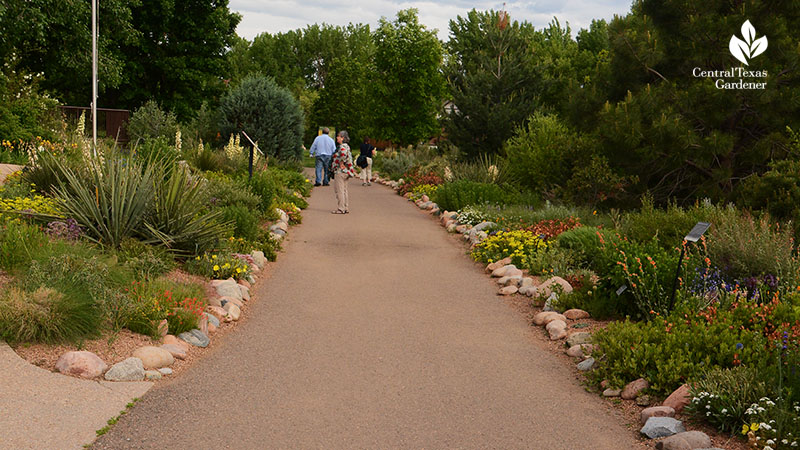
It doesn’t matter if we can’t grow some of these; we’ve all got options to replicate the design concept that varies our view and pollinator habitat.
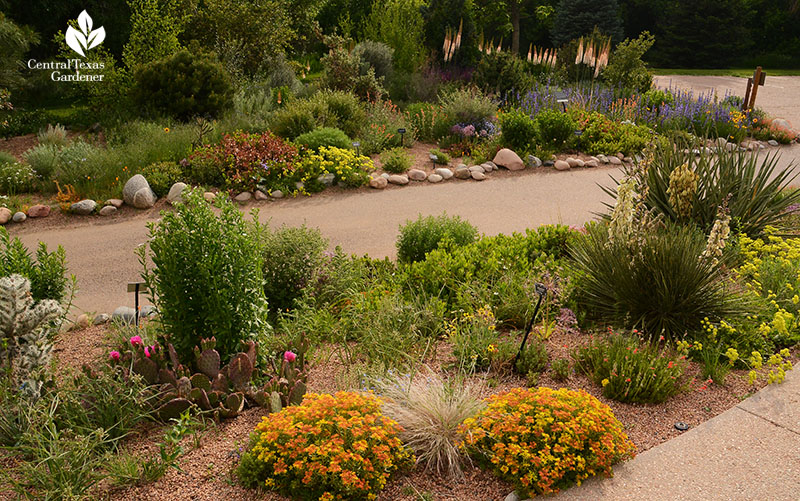
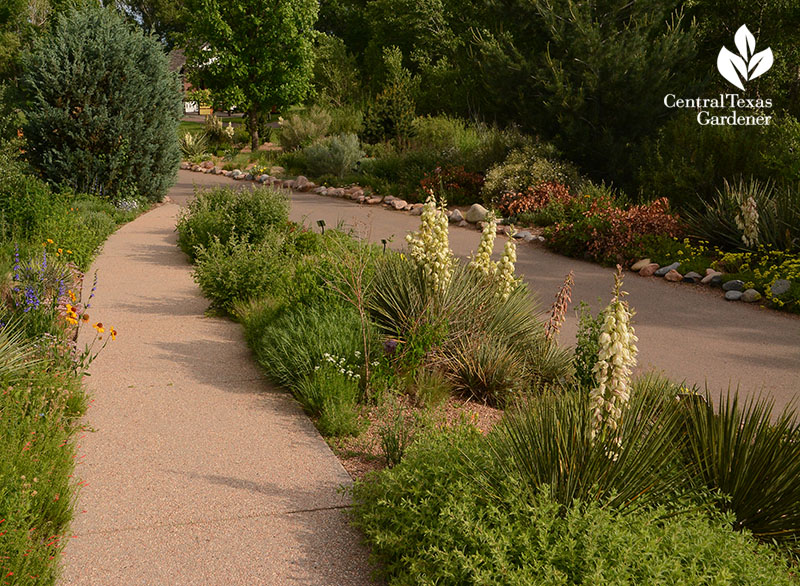
Here’s an example of a reflective heat driveway neighbor strip at Carol and Randy Shinn’s garden in Fort Collins. They mingle short and tall, including bee-loved red and purple penstemons. That gently screening shrubby white is Apache Plume (Fallugia paradoxa).
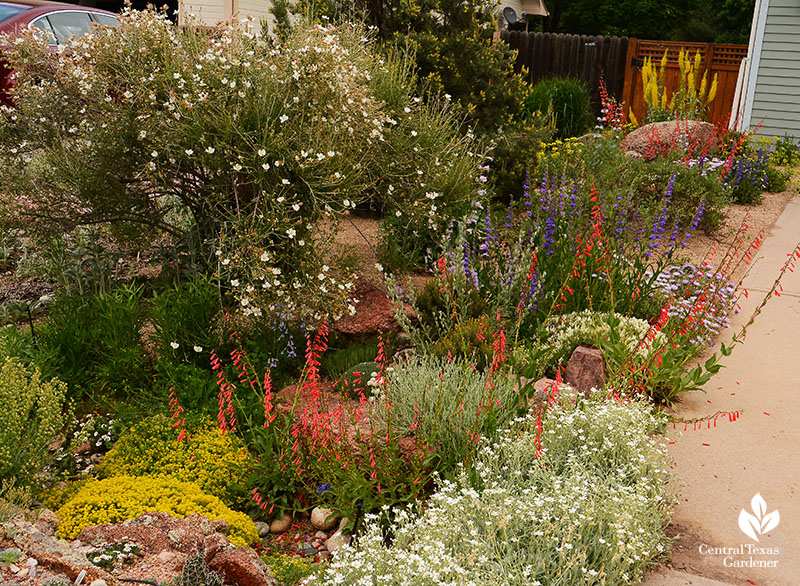
Apache Plume makes it into the Trans-Pecos and western Edwards Plateau in Texas, according to Mary Irish in her essential book Trees and Shrubs for the Southwest: Woody Plants for Arid Gardens. Bees find it wherever it grows.
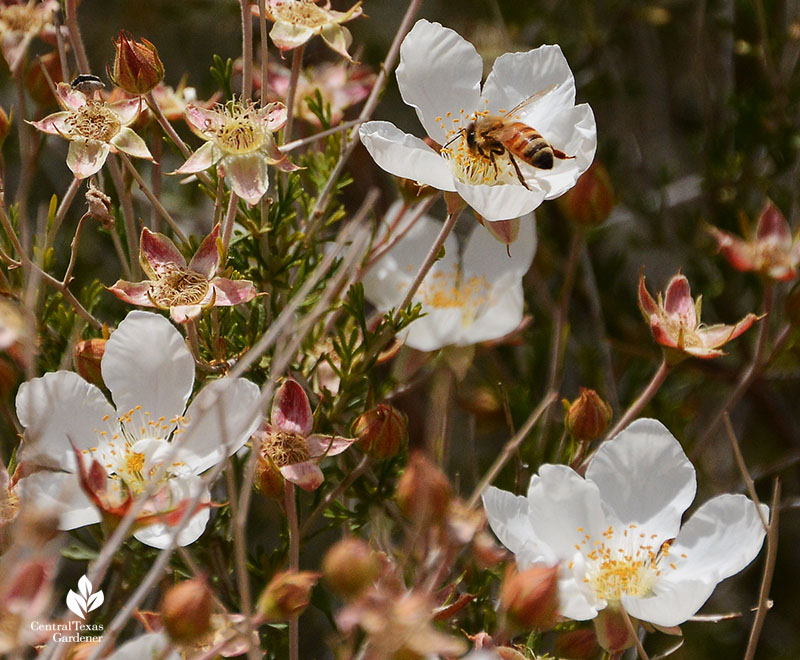
Pair it with desert beardtongue penstemon (Penstemon pseudospectabilis) like at The Gardens on Spring Creek in Fort Collins and you’ve got a pollinator feast. Again, all of us have shrubs and perennials that do the same valuable job.
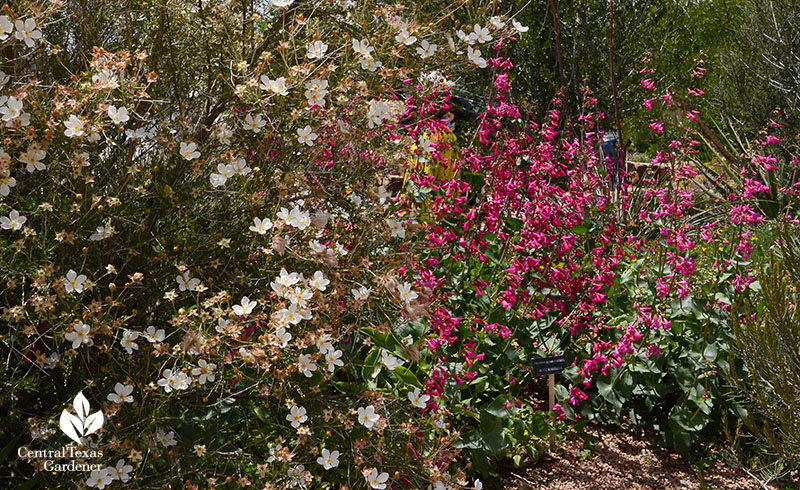
Here’s one that we can grow in Central Texas: ‘May Night’ meadow sage (Salvia sylvestris ‘May Night’)—that deep purple in the foreground of Mary and Larry Scripter’s front porch in Niwot.
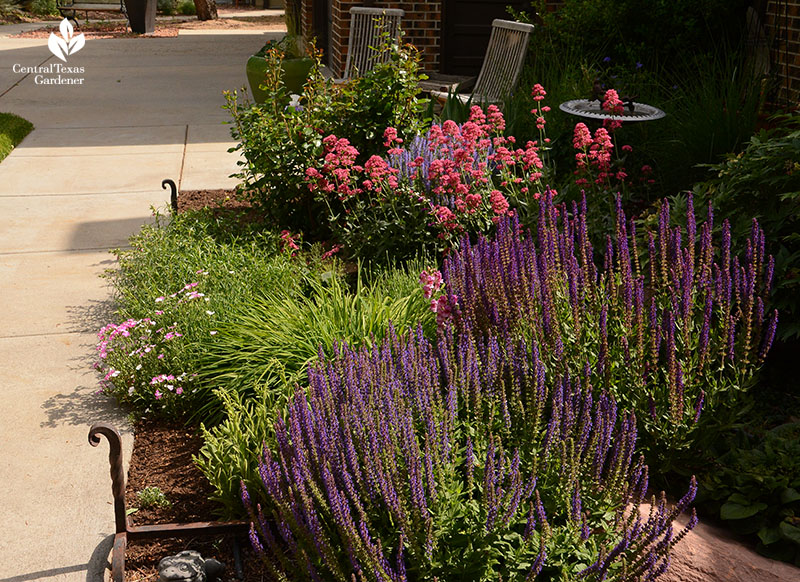
And here’s Salvia sylvestris ‘Blue Hill’ at a Georgetown, Texas front porch, home to Lori and Jack Shreves.
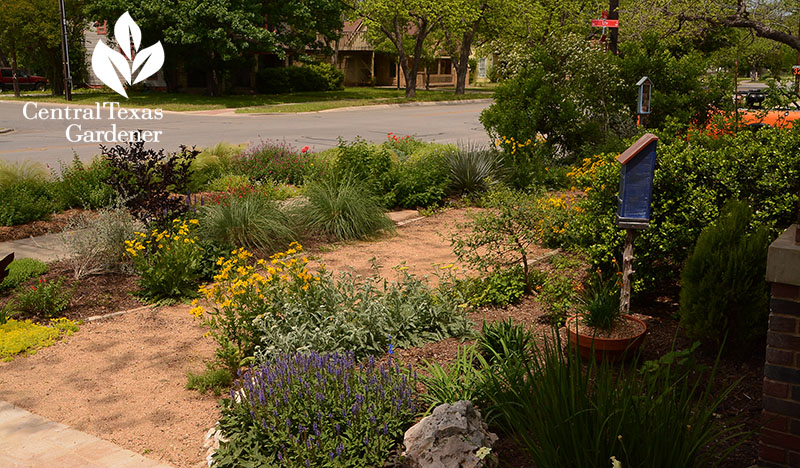
You know that I love bearded irises for their evergreen non-pokey structure and unfussy attitude about drought, rain bombs and freezes. Again at the Shinn’s beautifully-layered front yard, even our (fun) Fling bus driver had to grab a shot. I bet the Shinns have as many precious pass-along stories as I do.
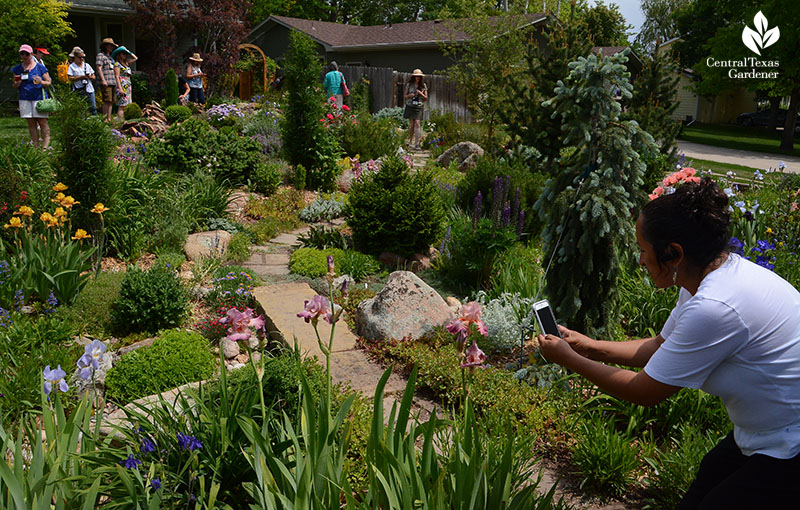
Bearded irises of all colors were everywhere, here with dianthus, I think.
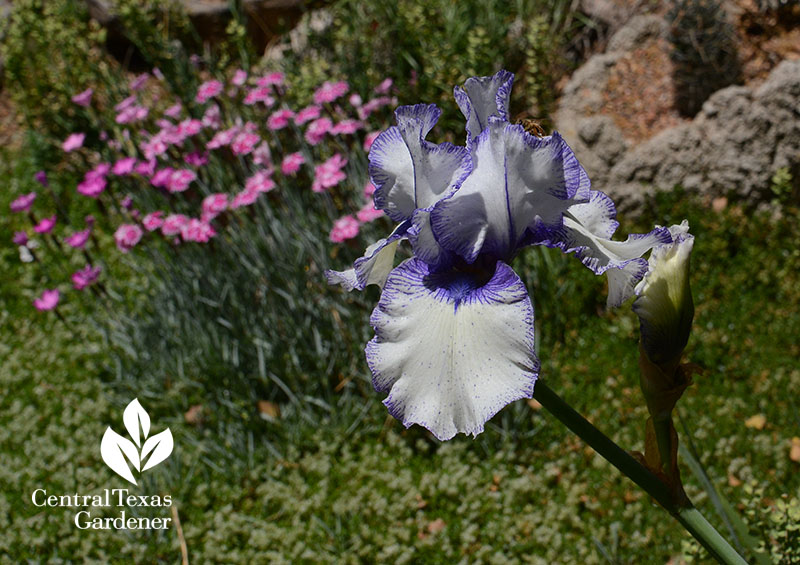
In Mary and Larry Scripter’s island bed, variegated iris joins low-growing leafy ajuga, yucca and grasses.
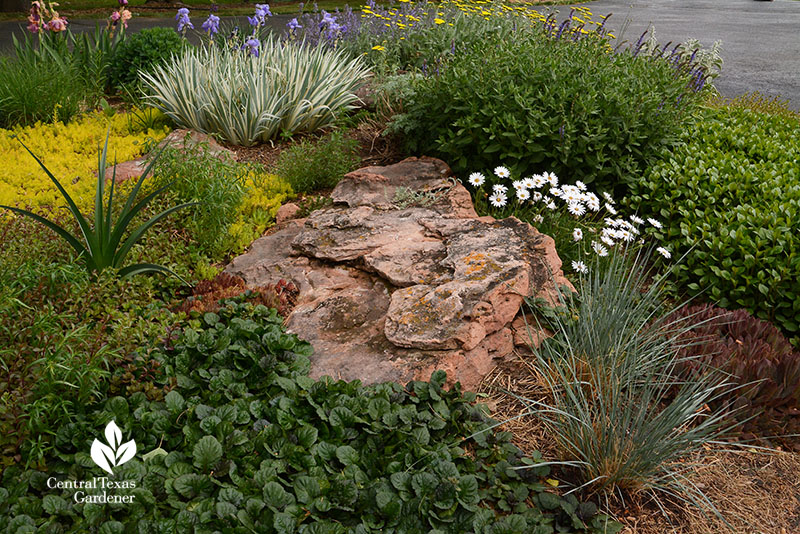
Chatfield Farms rounds up a wide variety in their geometric demonstration test gardens.
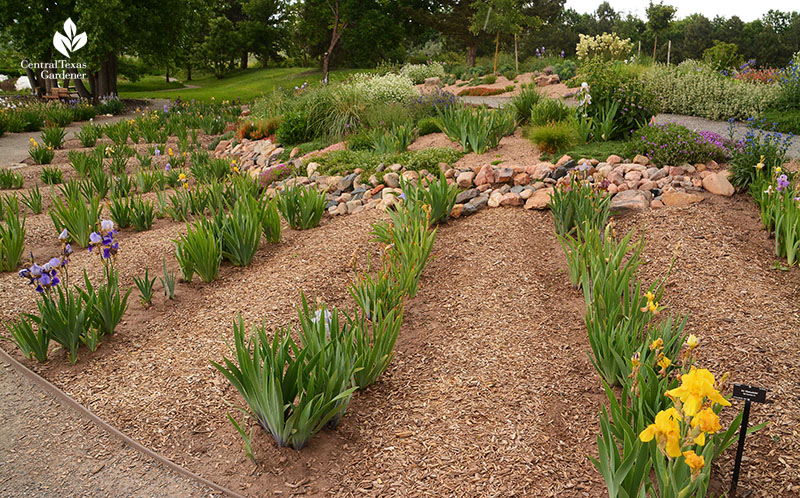
Others cluster in borders along the vegetable garden fence.
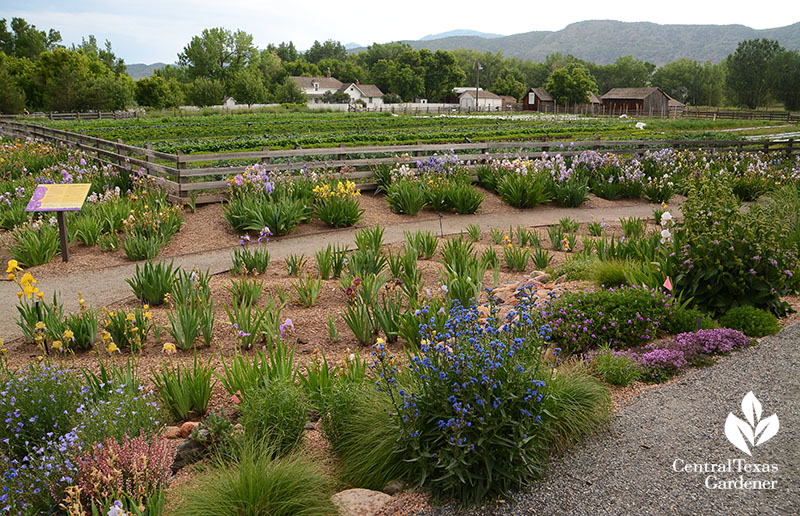
At Denver Botanic Gardens, bearded irises soften cloudless skies against gravel walkways to a destination bench cove.
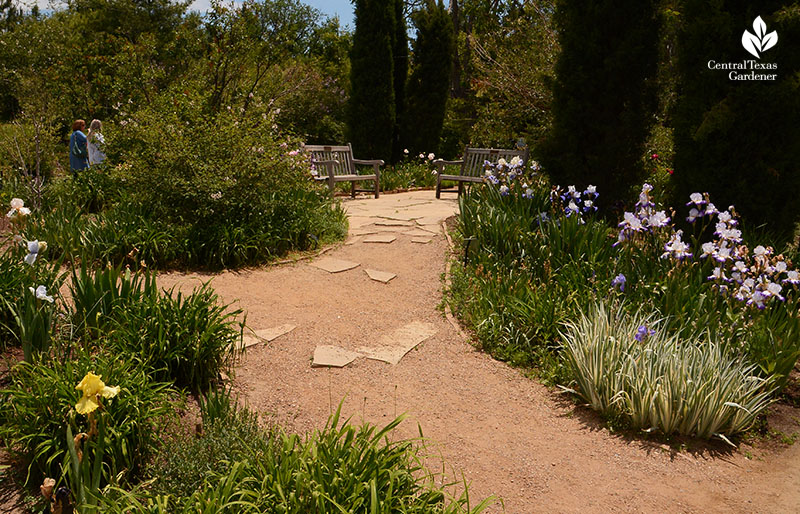
And yes, I saw ‘Denver Gold’ columbine everywhere, one that I often find in local nurseries. For me, humidity, heavier soil, and rain bombs shorten its life span.
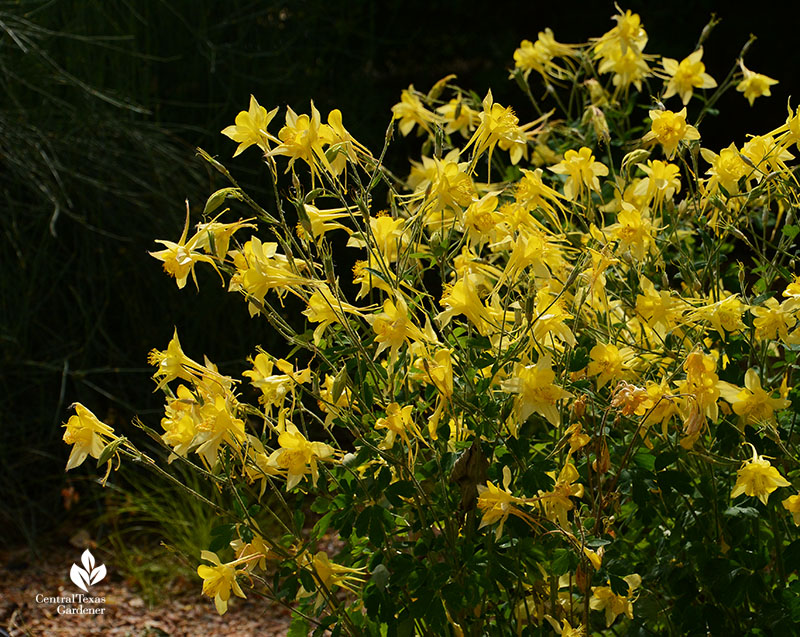
Succulent ice plants, including Portulaca, Aptenia, and Delosperma, are so easy to grow in hot, dry times. My Aptenia even makes it through winter.
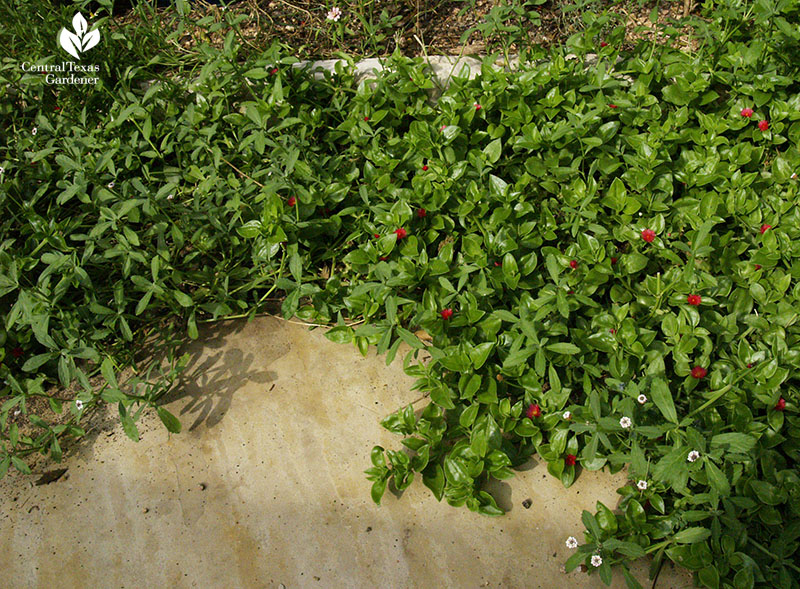
At Denver Botanic Gardens, this eye-popping hot pink (literally hot!) Delosperma stopped Sunday crowds in their tracks. Golden-yellow Stomatium loganii nestled against it. In Texas, a native yellow 4-nerve daisy (Tetraneuris scaposa) would substitute in well-drained spots.
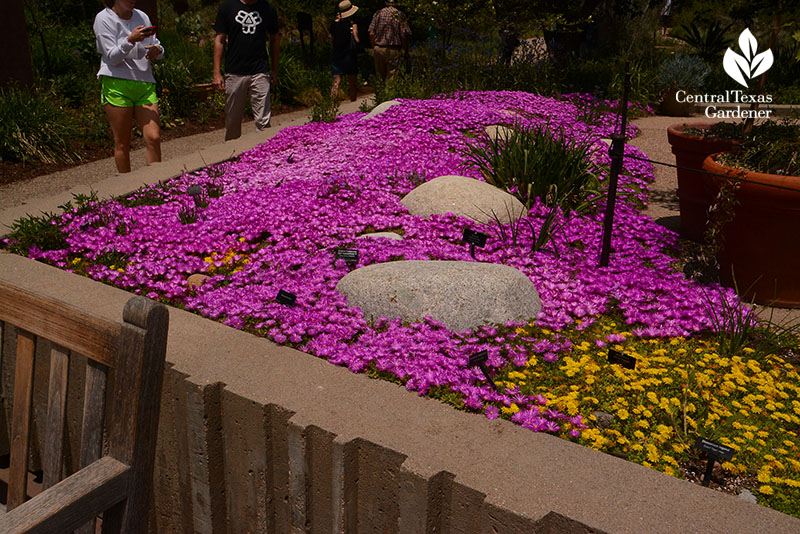
Here’s another familiar one that’s a fave in Texas gardens: native coral honeysuckle (Lonicera sempervirens), though ours bloom in spring.
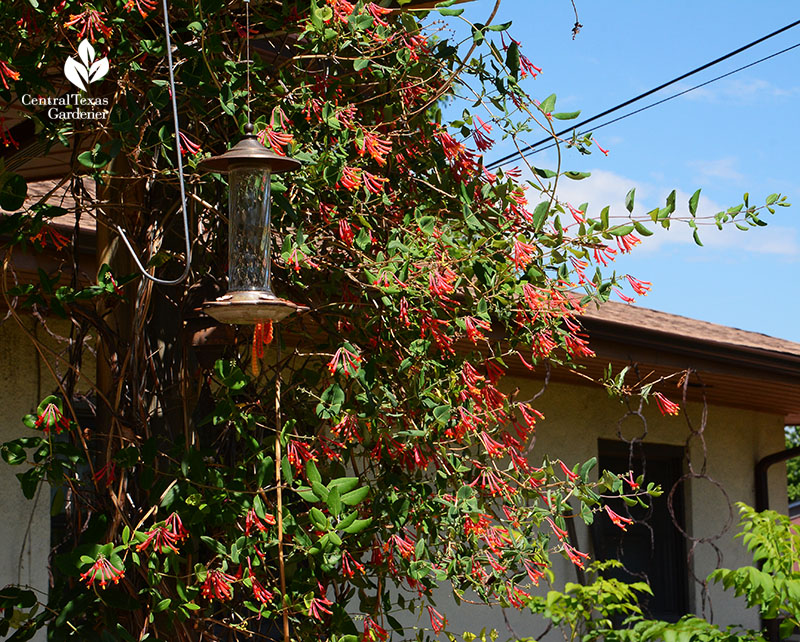
Climbing up the patio support (and apparently across the top), what a great way to bring hummingbirds up close and provide a little shade.
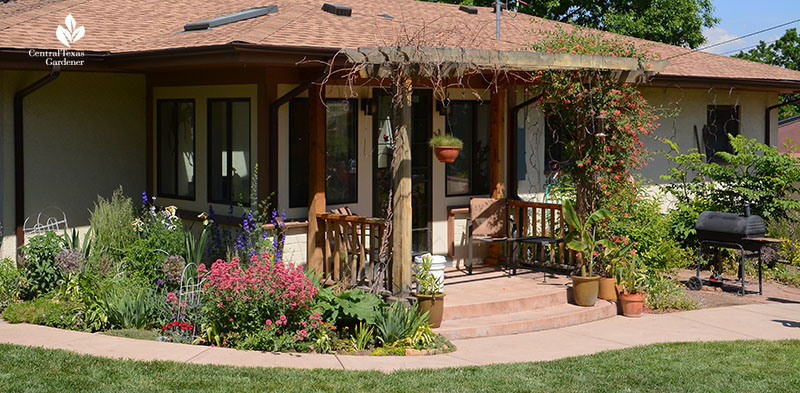
In the border plants, a sphinx moth nectars on Jupiter’s Beard or red Valerian (Centranthus ruber). Although drought tough and butterfly-loved, it’s considered invasive/aggressive in California, Washington, and Oregon.
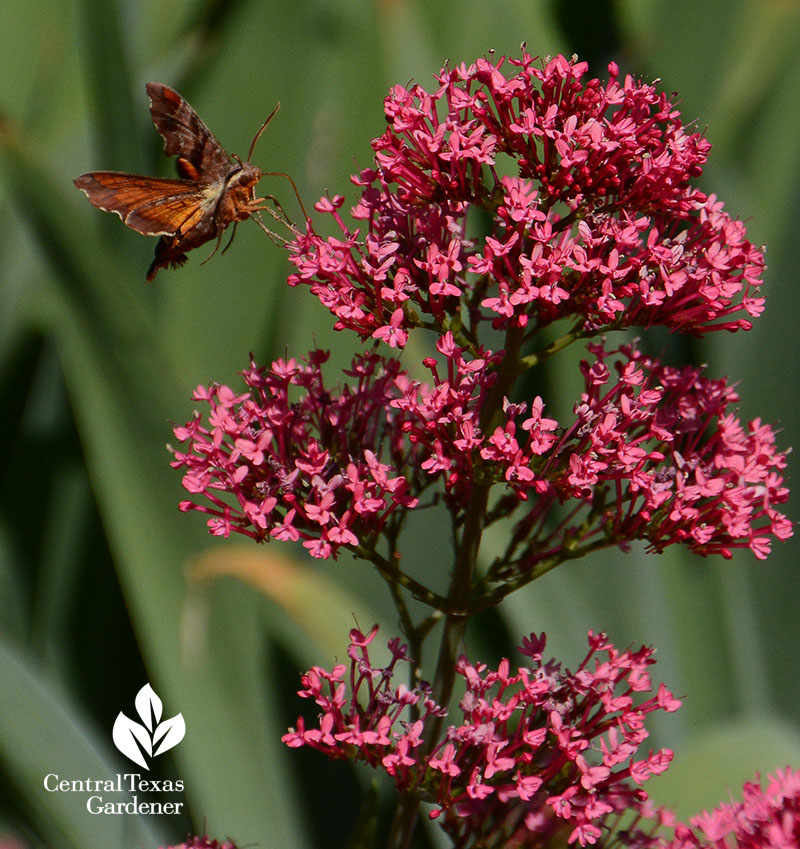
It wouldn’t work in my garden, but Turk’s caps along my patio do the same trick.
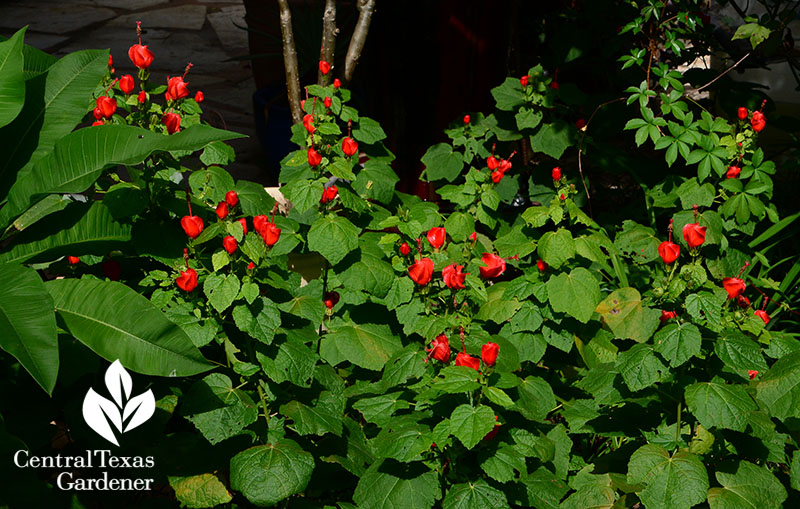
California horticulturist and designer Nan Sterman knows that water thrifty gardens don’t have to be blah and deplete of wildlife.

Author of Hot Color, Dry Garden, and host of A Growing Passion on PBS, this week she pulls together eye-popping designs with plants, architecture, furniture and accents.

Watch now!
And thanks for stopping by! See you next week, Linda







